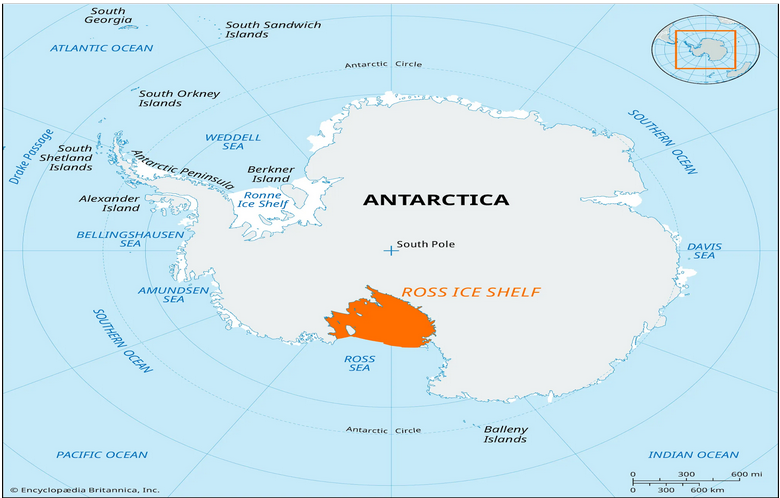News Excerpt:
Potential acceleration and eventual disintegration of the Ross Ice Shelf, leading to its movement into the sea, would have far-reaching consequences.
- The Ross Ice Shelf is the largest ice shelf of Antarctica. It is several hundred meters thick.

More about the News:
- Researchers have uncovered a surprising phenomenon in Antarctica: the massive Ross Ice Shelf, roughly the size of France, lurches forward several centimeters once or twice a day.
- This movement is triggered by the Whillans Ice Stream, a fast-flowing river of ice that occasionally gets stuck and then surges ahead.
- The discovery highlights a previously unknown aspect of ice shelf dynamics and raises questions about the long-term stability of the Ross Ice Shelf in the face of climate change.
Sudden Shifts, Not Gradual Flow
- Unlike most glaciers that creep at a glacial pace, the Whillans Ice Stream exhibits a stop-and-go motion.
- A lack of water lubrication beneath the stream may be causing it to intermittently stick, then release built-up pressure in sudden bursts.
- These jolts, similar to tremors along earthquake faults, push against the Ross Ice Shelf.
Icequakes and Fractures: A Potential Threat
- While the daily jumps aren't directly linked to human-caused warming, They could contribute to the weakening of the Ross Ice Shelf.
- Ice shelves act as barriers, slowing the flow of glaciers and ice streams into the ocean.
- If the Ross Ice Shelf weakens and breaks apart, it could accelerate ice melt rates and sea level rise.
Scientists are monitoring the situation closely
- The research team emphasizes that icequakes and fractures are natural occurrences on ice shelves.
- However, they will be closely monitoring the Ross Ice Shelf for signs of disintegration,
- Similar to what has happened to smaller ice shelves in the past.
- This new study highlights the complex and dynamic nature of Antarctic ice shelves and the need for continued research to understand their future under a changing climate.
|
Whillans Ice Stream,
|
